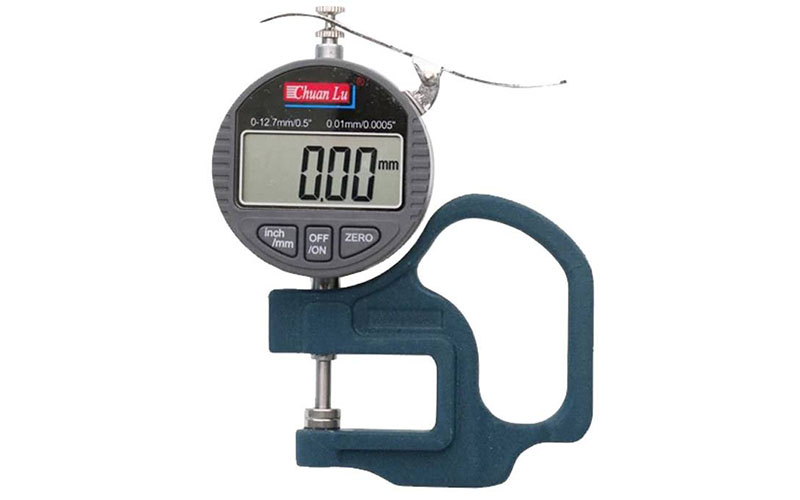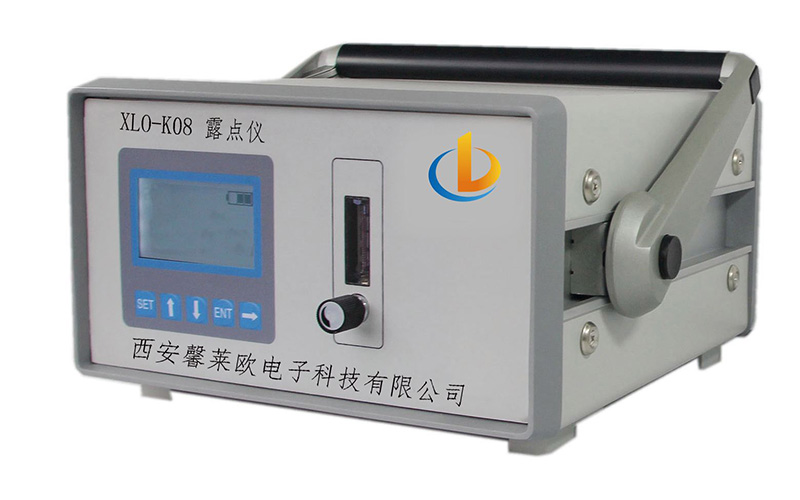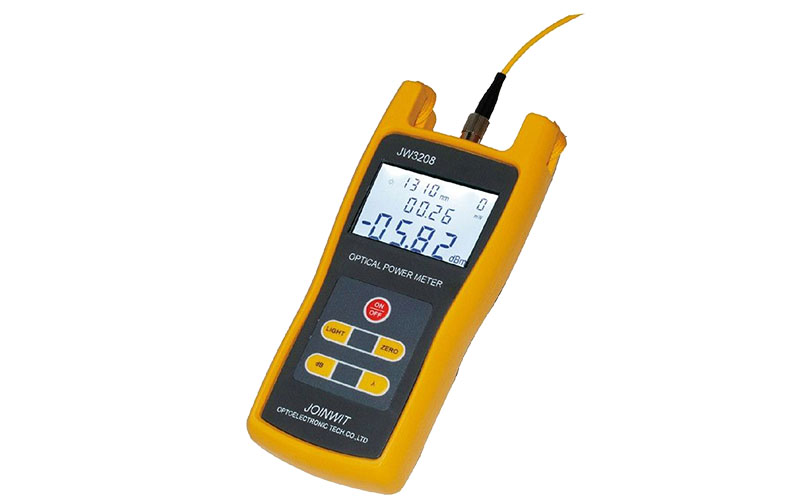Thickness of paper refers to the thickness of paper or cardboard directly measured under an absolute pressure between two measuring plates, in mm or μm. Generally, the thickness directly affects the opacity of the paper, and the greater the thickness, the better the opacity. Thickness uniformity is especially important for paper, where uneven thickness can affect gloss and whiteness loss and gradation and color reproduction instability.
Paper and cardboard are generally distinguished according to the basis of weight and thickness. According to the standard, those with basis weight less than 225g/m2 and a thickness less than 0.1mm are called paper; those with a basis weight greater than 225g/m2 and a thickness greater than 0.1mm are called cardboard.
Cardboard is the raw material for carton manufacturing. The thickness of the cardboard directly affects the edge compressive strength, puncture strength, and compressive strength of the cardboard. Many reasons affect the thickness of the cardboard. If the cardboard is too thin, it will reduce its edge compressive strength, puncture strength, and compressive strength accordingly.
Difference between the Weight Thickness and Tightness of Paper
Quantity, thickness, and tightness are the basic parameters of paper, representing the basic physical properties of paper. However, there are differences inseparable between the three.
The basis weight of paper refers to the mass per unit area of paper; the unit is g/m2, usually expressed in W. The basis weight can obtain this value by taking a sample with a quantitative sampler and then weighing it with an electronic balance.
The thickness of the paper refers to the vertical distance between the front and back surfaces of the paper under certain measurement conditions.
The tightness of paper refers to the mass of paper per cubic centimeter; the unit is g/m3, which is represented by the letter D; in addition, there is also a name for the bulk of the paper, which is defined as the reciprocal of the tightness, referring to the weight of 1g. The size of the paper volume is denoted by the letter V. The following formula can be used to calculate the bulk of the paper: V= (T*1000/W)
Studies have shown that more and more paper manufacturers and users have paid attention to the parameter of paper thickness in recent years. Because the thickness of the paper greatly affects the opacity and stiffness of the paper. Suppose paper producers can achieve the same high bulk, stiffness, and opacity. Then, it is possible to use less fiber material to achieve the same paper quality indicators, which can effectively and greatly save costs.
What Is A Paper Thickness Gauge?
Thickness gauges are instruments used to measure the thickness of materials and objects. It is often used in industrial production to continuously sample the thickness of products (such as steel plates, steel strips, films, papers, metal foils, etc.). Thickness gauges include radioactive thickness gauges using the penetration characteristics of alpha rays, beta rays, and gamma rays, ultrasonic thickness gauges with changes in ultrasonic frequency and eddy current thickness gauges based on eddy current principles, and thickness gauges based on mechanical contact measurement principles. A thickness gauge is a special instrument for measuring the thickness of paper and cardboard. It can be widely used in the thickness measurement of paper, cardboard, and other sheet materials. So what are the instruments for measuring the thickness of paper?
How to Measure the Thickness of Paper
The paper thickness gauge is a special instrument for measuring the thickness of paper and cardboard. It can be widely used in the thickness measurement of paper, cardboard, and other sheet materials.
Determination of Single-Layer Thickness
Fold the five samples in half longitudinally to form 10 layers. Then cut two stacks of 1/100 m2 samples along the transverse direction, 20 samples. Use a thickness gauge to measure the thickness of each sample separately, and each sample should be measured at one point.
Determination of Lamination Thickness
Cut 40 samples from the five samples taken, and stack each stack of 10 samples face-up to prepare four stacks of samples. Use a thickness gauge to measure the thickness of the four stacks of samples, respectively, and measure three points for each stack. If the layer tightness is determined, the mass of 40 samples shall be weighed by a balance, and the quantification shall be calculated according to the standard.
Measurement of Thickness Difference in Width
A whole sheet of paper is randomly selected, no less than six samples are uniformly cut along the transverse paper web, and the thickness of each sample is measured with a thickness gauge. Three points are measured for each sample, and the average value is taken as the measurement result of the sample.
Instrument Measurement Requirements
The paper thickness gauge is equipped with two parallel circular measuring surfaces, and the paper or cardboard is placed between the two measuring surfaces for measurement. During the measurement process, the pressure between the measurement surfaces should be (100±10) kPa. A constant load method should ensure that the pressure between the two measurement surfaces is uniform, and the deviation should be within the specified range. Depending on the product standard, special paper or cardboard can be measured with different pressures.
Two measuring surfaces form the main body of the thickness gauge; that is, one measuring surface is fixed, and the other measuring surface can move in its vertical direction.
The diameter of one of the measurement surfaces is (16.0±0.5) mm. The diameter of the other measurement surface should not be less than this value so that the pressure measurement area is usually 200mm2 when measuring the thickness.
When the thickness gauge reads zero, the entire plane of the smaller measurement surface should be in full contact with the larger measurement surface.
Difference between Digital Display Paper Thickness Gauge and Pointer Thickness Gauge
A common standard procedure for measuring thickness is to clamp the paper under pressure between two steel plates. The distance between the two clamping plates is the thickness measurement. Unfortunately, the pointer thickness gauge measurement method suffers from two glaring flaws. The first is that the paper’s surface is rough and uneven, and the paper is usually not all the same thickness. The second is that the pressure exerted by the platen will compress the sheet structure. Due to the papers’ different surface roughness and compressibility, there is a clear difference in accuracy when the measured thicknesses are compared. However, the digital display paper thickness gauge
- Adopts a touch screen control system
- A fully automatic test method
- One key to complete the test
- Can be operated on a single machine
It can also set the number of consecutive tests to reduce errors and is used to detect the thickness of a single layer of paper within 6mm.
It is suitable for accurate thickness measurement of various materials such as plastic films, sheets, diaphragms, paper, foils, silicon wafers, etc., within the range.
The Calculation Formula for Paper Thickness
Thickness Calculation
Calculate the average thickness of each sample to obtain the thickness of the single layer. Calculate the average of the multilayer thicknesses and divide by the number of layers to get the laminate thickness
Banner Thickness Difference
The thickness difference of the width and the difference of the relative width are calculated as follows: S1=Tmax-Tmin /S2= (Tmax-Tmin)/T*100
In the formula
S1——Banner thickness difference, mm
S2——the relative thickness difference of the banner, %
Tmax——Maximum thickness, mm
Tmin——minimum thickness, mm
T – Average thickness, mm
How to Use a Pointer Paper Thickness Gauge
Gauge Zero Operation
1) Press the lift handle to lift the measuring head, and wipe the measuring surface of the measuring head and the measuring anvil with a soft silk cloth.
2) Loosen the locking screw on the front of the meter base, move the position of the gauge up and down, make the pointer of the gauge rotate, or the display screen shows 2-3mm, then tighten the screw to lock the position of the gauge.
3) Press the ZERO key or turn the outer dial to display 0, or the pointer points to “0”.
4) Press the lift handle to move the measuring head, and observe whether the gauge display can return to zero accurately in each working cycle. If not, wipe the measuring surface and reset it to zero.
Test Steps
Step #1: Samples are taken, prepared, and processed as specified.
Step #2: Press the lift handle to observe whether the scale can return to zero accurately. If not, the scale zeroing operation should be performed again.
Step #3: After the measuring head is raised, place the sample on the measuring surface of the anvil until the measuring head is in contact with the sample, read and record the reading of the scale. Then, replace the sample for the next test.
Factors That Affect Paper Thickness Measurement Results?
The measurement result of paper thickness is affected by the environment, relative humidity, instrument measurement accuracy, and pressure. When the sample is in the air with high humidity, the measurement result will be high due to moisture absorption and expansion; otherwise, it will be low; when the measurement pressure increases, the thickness value will decrease accordingly, so the pressure when measuring the thickness should be specified;
When the thickness of the paper is measured in a stack, it is called the laminated thickness. The thickness calculated from this measurement is often lower than the thickness obtained by the single-layer test. When the pressure is constant, the average thickness value decreases as the number of layers tested increases. This is due to the uneven surface of the paper, which cancels each other out when stacking, and the effect of bulkiness.
Relationship between Paper Thickness and Gram Weight?
The thickness is proportional to the gram weight. The thicker it is, the heavier it is, and the stiffness and flexibility of the paper are inversely proportional. The thicker the paper, the higher the stiffness, the worse the flexibility, and the worse the reduction degree.
What Effect Does Paper Thickness Have On Printing?
If the thickness of the paper is not uniform, the printing pressure will change, and then the transfer of printing ink will change during printing. The impression will be uneven, which will affect the product quality of the printed matter. The thickness of the paper also affects the opacity of the printed paper.
Obviously, the thinner the printing paper, the lower the opacity is likely to be. When printing, it is necessary to fully consider the probability of printing ink through-back and through-printing. For printing on thin paper, opaque printing should be used as the standard, thicker printing ink should be selected, and small pressure and thin ink layer should be avoided as much as possible to print.




